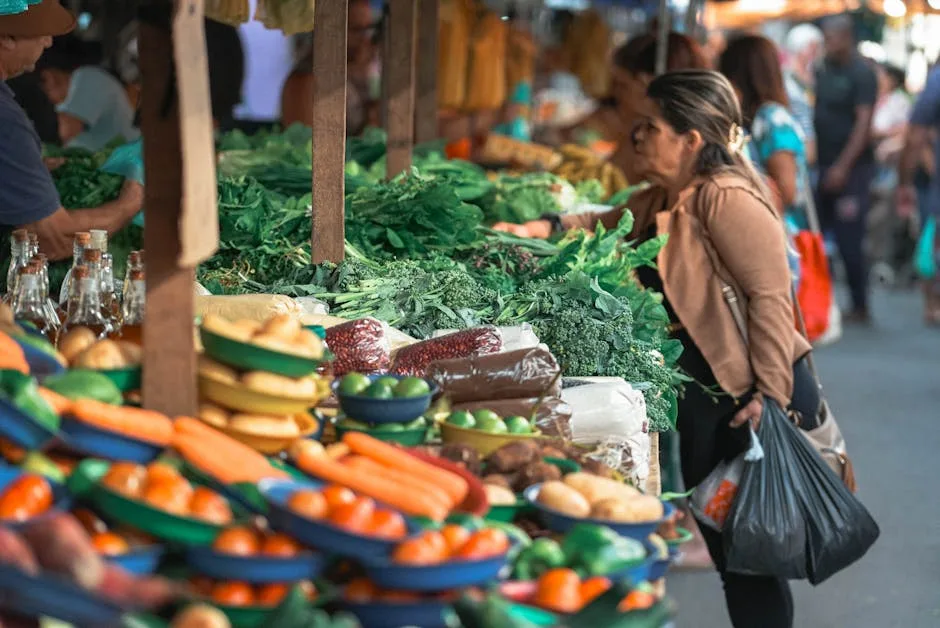Brazil, a vibrant and diverse nation, boasts a rich tapestry of cultures, traditions, and social norms that can astonish foreigners. Cultural shocks are common experiences for travelers encountering new customs and everyday habits in any region, and Brazil is no exception. The notion of culture shock encompasses the feelings of disorientation and confusion that often arise when individuals are immersed in an environment markedly different from their own. Understanding the intricate social fabric of Brazilian culture is essential for navigating interactions and avoiding miscommunications.
Foreigners may find themselves surprised by certain Brazilian customs, such as the warmth and familiarity displayed in social interactions. Greetings often involve close physical contact, such as hugs and cheek kisses, which may be perceived as overly intimate by individuals from cultures that prioritize personal space. Additionally, the Brazilian concept of ‘jeitinho’, or the informal way of resolving obstacles, might clash with more structured approaches favored by some foreigners. Recognizing these differing behaviors is crucial for effective communication and social integration.
Furthermore, Brazil’s diverse population, influenced by Indigenous, African, and European heritages, adds layers to cultural practices. Festivals like Carnaval exemplify the country’s joie de vivre, yet they may also bring about bewilderment for those unfamiliar with such exuberance. The importance of family and community in Brazilian society often manifests in various social rituals that may seem unfamiliar. Acknowledging these nuances can foster deeper understanding and appreciation among foreign visitors.
In essence, merely traveling to Brazil without an awareness of its unique cultural shocks may lead to misunderstandings. By familiarizing oneself with Brazilian customs and everyday habits, travelers can cultivate more meaningful connections and enjoy their experiences in this captivating country.
Greeting Customs: The Brazilian Way
Brazilian greeting customs reflect the country’s rich culture, characterized by warmth and openness. Regardless of the social context, greetings often emphasize physical touch, which serves as a vital cornerstone of Brazilian social interaction. A handshake is commonly employed when meeting someone for the first time; however, it is merely the starting point of the greeting ritual.
For close friends and family members, greetings usually incorporate hugs and kisses on the cheek, a practice that varies greatly by region. In many parts of Brazil, particularly in the South, it is typical to greet with two or even three kisses on the cheek, alternating sides. Conversely, in the North and Northeast, a single kiss is often sufficient. This affinity for physical closeness is indicative of Brazil’s communal spirit, and it contributes to the friendly atmosphere prevalent in social gatherings.
The context in which greetings occur can also influence the method employed. In professional environments, the initial handshake is accompanied by a warm smile and often followed by a light pat on the back, signaling familiarity and friendliness. As personal relationships deepen, the exchange of hugs and kisses becomes more commonplace, illustrating the fluid transition from formal to informal interactions in Brazilian society.
It is essential to approach greetings in Brazil with attentiveness to individual preferences and regional nuances. Some people may prefer maintaining physical space, particularly in more formal settings, while others embrace a more intimate approach. Understanding these subtleties helps foster mutual respect and builds stronger connections among individuals from diverse backgrounds. Ultimately, embracing Brazilian greeting customs enhances interpersonal relationships and enriches cultural experiences, illustrating a beautiful aspect of this vibrant nation.
Social Etiquette in Brazil: Do’s and Don’ts
Understanding social etiquette in Brazil is crucial for anyone looking to integrate into or engage with the local culture. The Brazilian way of life is rich with traditions, and adhering to these norms can enhance interpersonal relationships. One essential aspect is the approach to gift-giving. It is considered polite to bring a small gift when invited to someone’s home, such as flowers or a sweet treat. However, avoid giving white flowers as they are typically reserved for funerals, and always present the gift wrapped elegantly.
Addressing individuals correctly is another fundamental component of Brazilian social etiquette. While Brazilians are generally friendly and informal, using first names rather than titles is the norm, especially in social contexts. However, in professional settings, it is prudent to initially address someone by their title, such as “Senhor” or “Senhora,” until a closer relationship is established. This balance of familiarity and respect is key in fostering effective communication.
Punctuality can also be a nuanced concept in Brazil. While being on time is appreciated, social gatherings often operate on a more relaxed schedule. Arriving 15 to 30 minutes late may be acceptable in informal settings, though one should always gauge the specific context and the host’s expectations. Conversely, in business scenarios, punctuality is more critical, and being late can be regarded as disrespectful.
It is important to be aware of cultural sensitivities as these can vary significantly across different regions of Brazil. For instance, discussing politics or religion during social interactions can lead to discomfort. Therefore, it is advisable to steer clear of personal subjects until a deeper rapport is established.
Understanding Personal Space in Brazil
Personal space is defined as the physical distance that people maintain between themselves and others, often reflecting deeper cultural values and social norms. In Brazil, personal space tends to be considerably smaller compared to many Western cultures. This aspect of Brazilian culture often surprises visitors who are accustomed to maintaining greater physical distance in social interactions.
Brazilians commonly engage in close proximity during conversations, a practice that reflects their warm and friendly nature. This smaller personal space allows for a sense of intimacy and connection, promoting open and expressive communication. Consequently, one can expect to stand closer to others, whether during casual encounters or more formal discussions. People often touch during conversations, exhibiting behaviors such as a light pat on the back or a hug, which emphasize familiarity and friendliness.
The perception of closeness among Brazilians is not merely a physical phenomenon; it also extends to emotional connections. This cultural trait can be explained through the value placed on relationships and social bonds in Brazilian society. Family and friendship are paramount, and maintaining physical closeness reinforces these important ties. As a result, personal space may be perceived differently, with proximity signaling affection and trust rather than intrusion.
For visitors, this cultural difference can lead to discomfort or misunderstandings. It is essential for tourists and expatriates to adapt to the local customs regarding personal space, embracing the Brazilian way of interaction. Accepting the smaller personal space can enhance social experiences and foster better relationships with locals, contributing to a more profound understanding of Brazilian culture.
Brazilian Mealtime Culture: Lunch vs. Dinner
Brazilian mealtime culture is characterized by distinct differences between lunch and dinner, reflecting the nation’s rich traditions and social values. In Brazil, lunch is often considered the most important meal of the day, typically enjoyed between 12 PM and 2 PM. Families and friends gather to relish a variety of dishes, making lunchtime a significant occasion for social interaction. This custom fosters a sense of community and reinforces family bonds, as people often take a break from their daily routines to share a meal together.
During lunch, it is common for Brazilians to indulge in a hearty plate of rice, beans, and proteins such as beef, chicken, or fish, accompanied by colorful salads and sometimes farofa, a toasted cassava flour mixture. The practice of dining in a relaxed atmosphere allows for meaningful conversations and connections among participants, highlighting the cultural emphasis on hospitality and companionship.
In contrast, dinner, which typically takes place later in the evening, is viewed as a lighter meal in comparison to lunch. While some families do gather for dinner, the urgency and social significance is generally less pronounced. The evening meal may consist of sandwiches, light salads, or leftovers from lunch, maintaining a focus on convenience rather than elaborate preparation.
Dining etiquette also varies between meals. Lunchtime gatherings are often more formal, with set tables and a range of courses, reflecting the importance of this daily ritual. Dinner, on the other hand, tends to be more casual, with a relaxed atmosphere and informal seating arrangements. Understanding these nuances in Brazilian mealtime customs reveals not only the significance of food but also the value placed on relationships and gatherings as cornerstone elements of the culture.
Answering Common Questions: ‘Why Do Brazilians…?
The question, “Why do Brazilians hug so much?” often arises among foreigners new to Brazil. This embracing custom is deeply ingrained in Brazilian culture and reflects the warm and expressive nature of its people. Brazilians often greet friends and acquaintances with a hug or a kiss on the cheek, signifying not just friendship but also a desire for connection. This behavior can be traced back to the significance placed on personal relationships, where physical touch is considered a natural and important aspect of social interaction. Unlike some cultures where personal space is highly regarded, Brazilians typically view physical closeness as a comfortable and integral part of communication.
Another prevalent question pertains to the seemingly slower pace of life observed in many parts of Brazil. Tourists often notice that schedules are more relaxed, and punctuality is viewed flexibly. This leisurely approach to daily activities stems from the cultural value placed on enjoying life. In Brazil, socialization and community are prioritized over rigid time management. Consequently, many Brazilians prefer to spend time with family and friends rather than adhering strictly to a clock. This cultural nuance can lead to misunderstandings, particularly for visitors from fast-paced environments. Understanding that the relaxed tempo is a reflection of the Brazilian ethos can help foreigners appreciate the social context behind such behaviors.
Lastly, the question “Why do Brazilians celebrate with such exuberance?” reveals another layer of cultural richness. Festivals like Carnival exemplify this, showcasing Brazil’s strong musical, artistic, and historical roots. Celebrations in Brazil often embody a communal spirit where music, dance, and vibrant displays of tradition create a shared experience among citizens and visitors alike. The importance of these festivities is indicative of Brazil’s collective identity, where joy and celebration are seen as vital components of life.
The Impact of Regional Differences on Brazilian Customs
Brazil, a vast nation stretching across nearly 3.3 million square miles, is home to an expansive array of cultural practices and social norms. The country’s cultural diversity is largely influenced by its geographical distribution, leading to distinct customs in five major regions: the North, Northeast, Central-West, Southeast, and South. Each of these areas boasts unique traditions, cuisines, and social habits that shape how Brazilians interact within their communities.
In the North, for instance, the Amazon rainforest creates a lifestyle connected to its rich biodiversity. Indigenous traditions are prominent, with many communities still practicing ancient rituals and crafts. The region’s annual festivals, such as the Parintins Folklore Festival, highlight local music and dance forms like bumbá-meu-boi. These customs reinforce a society that places immense value on community and nature.
Conversely, in the Northeast, a blend of African, Indigenous, and European influences shines through in the vibrant music genres such as forró and axé, alongside a distinct culinary tradition, famous for dishes such as acarajé. The social practices here often reflect a rich history of resistance and cultural pride, deeply influenced by past socio-economic struggles and migration patterns, creating a unique atmosphere in which customs are celebrated fervently.
The Southeast, a hub of economic activity, is characterized by a dynamic blend of cultures that come together in metropolitan areas like São Paulo and Rio de Janeiro. This region is known for its cosmopolitan lifestyle, where business and modern customs thrive, while traditional practices are often adapted or reinvented. Influences from international cuisine and lifestyle trends mingle with local customs, leading to unique social interactions that differ markedly from those in the more rural South or Central-West regions.
Lastly, the South showcases a blend of European immigrant cultures, particularly Italian and German, which significantly influence local customs, language, and social gatherings. The German Oktoberfest in Blumenau exemplifies how regional identities can flourish through unique celebrations, creating a vibrant cultural tapestry across Brazil.
The disparities among these regions illustrate how regional differences deeply impact Brazilian customs, shaping not only individual identities but also the collective social fabric of the nation. Understanding these variations enables a greater appreciation for the intricate dynamics of Brazilian society.
Adapting to Brazilian Culture: Tips for Foreigners
Adapting to a new culture can often be daunting, but with the right approach, embracing Brazilian culture can be a rewarding experience. Foreigners should begin their journey by maintaining an open-minded attitude towards the various customs and traditions that shape Brazil’s social fabric. Understanding that cultural values may differ significantly from one’s own experience is essential in navigating social interactions smoothly.
One pivotal aspect of adapting is to observe and respect local customs, particularly in social situations. For instance, greetings in Brazil often involve a warm hug or kiss on the cheek, and it is courtesy to reciprocate these gestures. Recognizing the importance of personal connections is crucial, as Brazilians tend to prioritize relationships over strict adherence to schedules or business protocols. Familiarity and rapport often pave the way for more meaningful interactions.
Engaging actively with the local community is another effective method to foster understanding and acceptance. Participating in community events, local festivals, or even joining a Brazilian dance class can enhance one’s immersion into the culture. Not only do these opportunities provide insights into traditional practices, but they also create avenues for meeting new people and building friendships. Learning basic Portuguese phrases can also illustrate a willingness to connect, as language is a critical component of any culture.
It is essential for newcomers to practice patience and adaptation to the laid-back tempo of life in Brazil. Flexibility in scheduling and a willingness to go with the flow can greatly enhance social interactions. Learning about Brazilian cuisine, music, and art is also beneficial, as these elements are integral to the country’s identity. By acknowledging and embracing the varied facets of Brazilian life, foreigners can cultivate a deeper appreciation for the culture while fostering harmonious relationships with locals.
Embracing the Brazilian Cultural Experience
As travelers embark on their journey to Brazil, they are often met with a rich tapestry of customs and traditions that may initially appear surprising. However, these cultural nuances provide a profound opportunity not only to learn but also to engage with locals in a meaningful way. Embracing the Brazilian cultural experience is essential for fostering mutual respect and understanding between visitors and residents. Each custom reflects the nation’s diverse history and influences, from Indigenous traditions to Portuguese colonization and African heritage, contributing to a unique societal fabric.
Experiencing culture shock in Brazil can be a transformative aspect of travel, allowing visitors to challenge preconceived notions and adapt to new environments. Whether it is navigating the vibrant social customs, partaking in the spontaneous nature of Brazilian festivities, or embracing the warmth of its people, travelers are encouraged to immerse themselves fully. It is crucial to approach these differences with an open mind and a willingness to learn—viewing unfamiliar practices as portals into the heart of Brazilian life.
Furthermore, recognizing the importance of cultural sensitivity cannot be overstated. Respecting local customs and traditions fosters goodwill and enriches one’s travel experience, leading to lasting memories and connections. As visitors engage with the Brazilian way of life—be it through savoring traditional cuisine, participating in lively samba dances, or understanding the significance of family and community—each interaction becomes a powerful lesson in appreciation and reciprocity.
Ultimately, embracing the Brazilian cultural experience enhances understanding and cultivates personal growth. By viewing culture shock not as a barrier but as an enlightening journey, travelers will find their experiences in Brazil profoundly enriching, cultivating a deep appreciation for this vibrant nation and its extraordinary customs.





